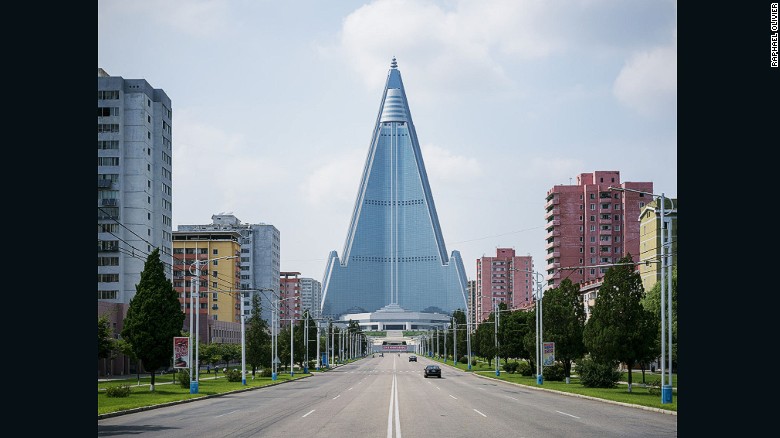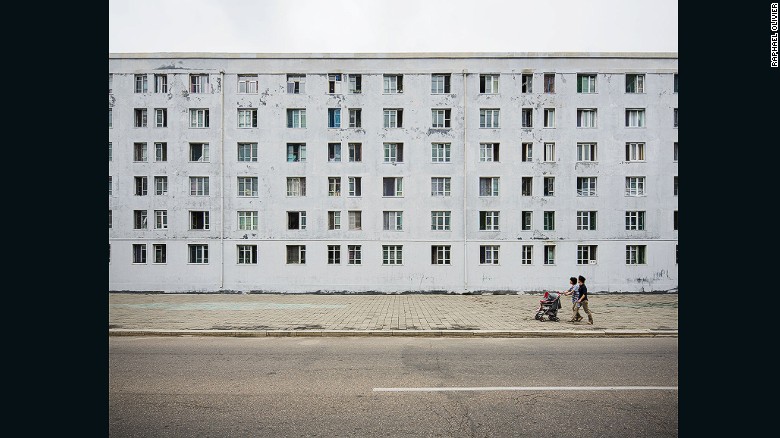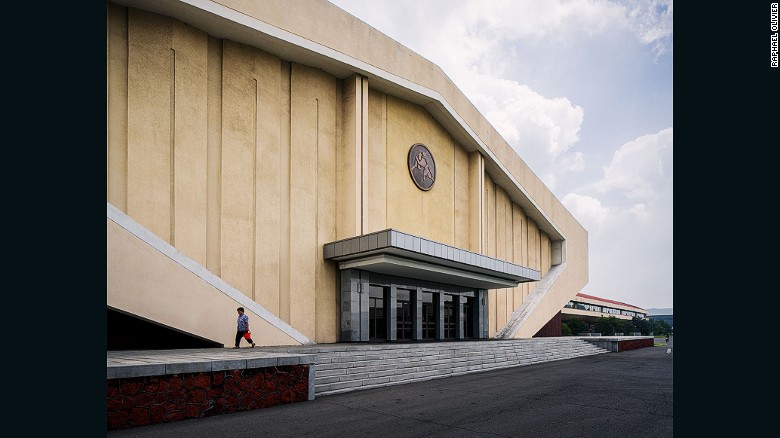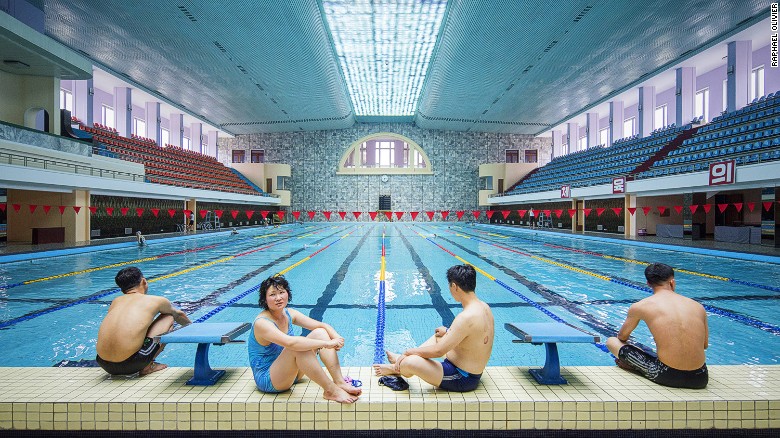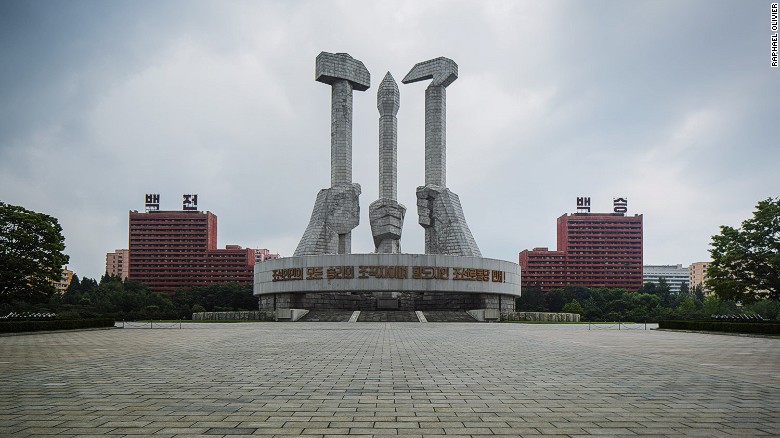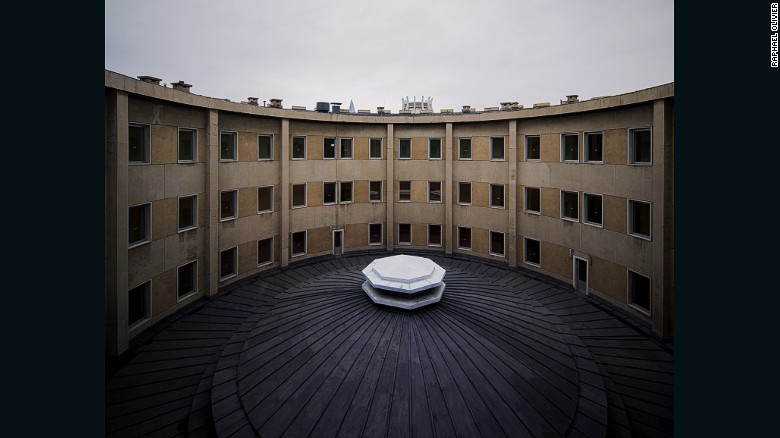Abajo, Olivier dice a CNN Style lo que encontró “seductor” acerca de Pyongyang – desde los azulejos del vestuario hasta el uso homogéneo de hormigón de la ciudad.
¿Cuáles son los retos particulares de la fotografía de arquitectura? ¿Qué hace que una foto de un edificio sea débil, y alternativamente fuerte?
Este es un tema vasto. Podría hablar de ello durante mucho tiempo. Es similar a un retrato. Usted puede fotografiar a una persona guapa, pero podría ser un mal retrato si no hubiese carga emocional. Por el contrario, si usted fotografió a una persona desagradable, pero si algo sucede con sus ojos, la postura … esto podría ser considerado un gran retrato.
La arquitectura es la misma. Es un juego de seducción entre el fotógrafo y el sujeto.
Si el fotógrafo es seducido por lo que ve, entonces hay una carga emocional. Fuera de factores como la luz, ángulos y lentes también juegan un papel importante en la fotografía arquitectónica. Depende de lo que el fotógrafo se siente delante de la estructura.
¿Qué fue lo que le pareció seductor de la arquitectura en Pyongyang?
Nunca me he sentido tan impresionado como he estado (en Corea del Norte) frente a edificios, espacios y espacios construidos. Es muy especial. Debido a que no hay anuncios, vallas publicitarias, pequeñas tiendas de café, cosas alrededor – nada realmente distrae de las propias estructuras. Todo es hormigón masivo y hay una fuerte energía irradiando de todos estos edificios.
Además, la planificación de la ciudad es tan único. Todo es tan simétrico y bien diseñado. Esto, junto con las estructuras y la armonía de los colores, es difícil de explicar a alguien que no ha estado allí. Pero traté de conseguir algunas de esas escenas a través de mis imágenes.
¿Hubo algo que te sorprendió acerca de Pyongyang?
No fue mi primera vez en Pyongyang, así que tuve una idea de diseño y una primera impresión de la ciudad. Pero creo que es difícil retratar toda la atmósfera – los pequeños detalles, los sonidos, la gente, cuando estás rodando en Corea del Norte. Es tan radicalmente diferente y especial.
http://edition.cnn.com/2016/08/14/architecture/pyongyang-architecture/index.html
